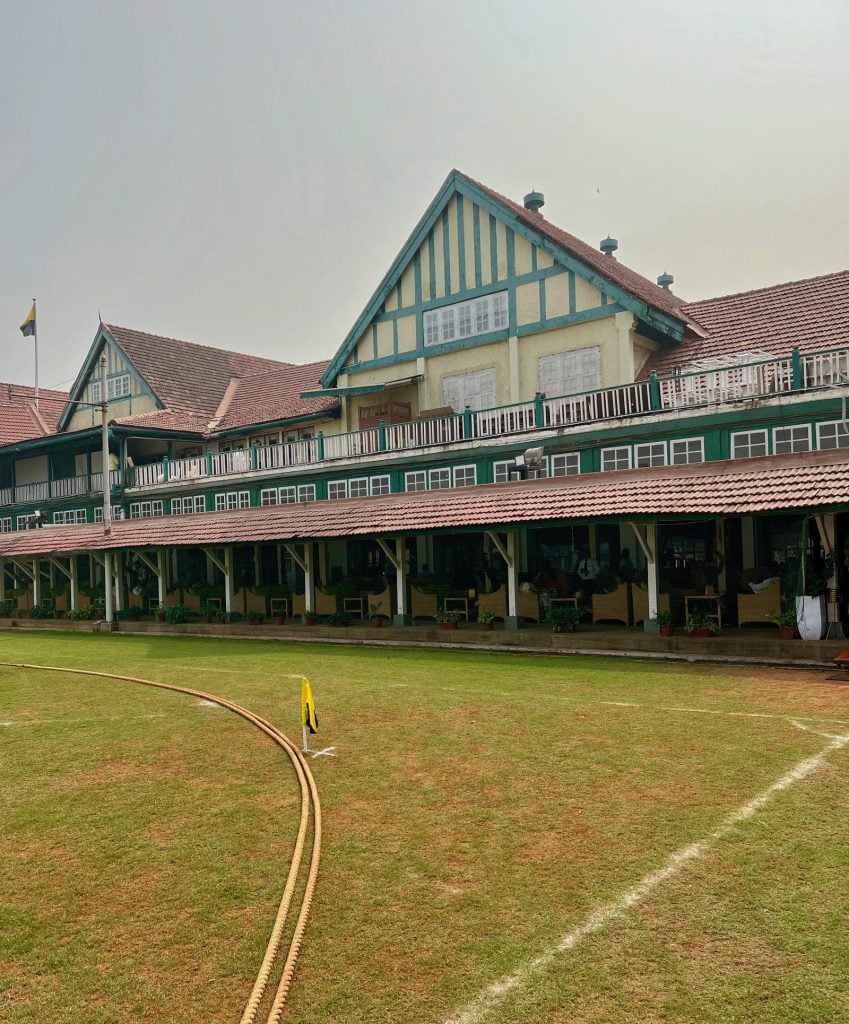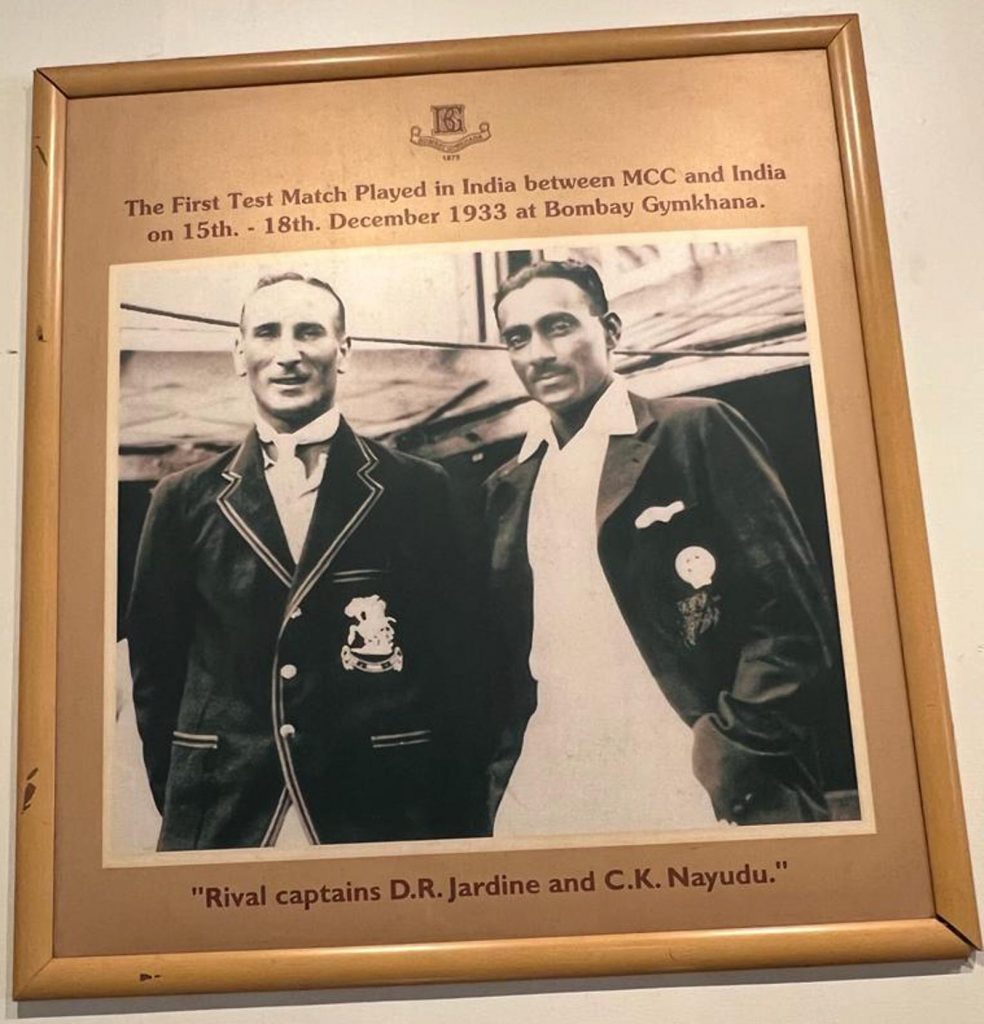An empty cricket ground can be an interesting place.
This is obviously the case with somewhere like Lord’s, where the mark of history is so deep. Lord’s is almost as interesting when empty as it is when full. Lord’s of course is exceptional, even among cricket grounds. Perhaps other sports have their shrines. I know people are prepared to spend good money to visit Old Trafford – the home of Manchester United Football Club, not the venerable cricket ground of the same name. I am no expert but Old Trafford does not seem to me to be an architectural and cultural masterpiece in the way that parts of Lord’s unquestionably are. I can accept that Manchester United has a great history – as does, say, Accrington Stanley – but it is the dubious lure of fan-dom that brings people to Old Trafford for selfies and tatty but expensive merchandise.
A few years ago we went to a wedding in Wellington, New Zealand. We had a lovely time with our friends visiting vineyards in Martinborough and the like. A highlight for me personally was to go with a friend to the Basin Reserve, the Test ground located on a roundabout not far from the city centre. Nobody was playing. That really didn’t matter. There is something very special about the Basin Reserve. The name itself is memorable. Test cricket has been played there for the best part of a century. Although quite central it has a pleasingly rustic feel. There is a little museum on the ground. We thoroughly enjoyed our visit.
Anyone who has made even the briefest of visits to the English countryside will be familiar with the idea of the deserted cricket ground. The classic, almost cliched, village green has often been the site of cricket matches for generations, even centuries. An essential accompaniment is the village pub where players will gather after a match. For, as Andrew Lang told us, “there is no talk so good as cricket talk, … when the old happy days of burned out Junes revive.”
Recently, we made a brief visit to India. I have been to India a few times, but this was the first time I had been to Mumbai.
Delhi may be the capital and Kolkata may be the most populous city but there has never been any doubt as to Mumbai’s pre-eminence in the phenomenal world of Indian cricket. The city itself is an astounding place. We were there for too short a time to get anything more than a hint of it’s true quality but our incredibly generous hosts ensured that at least we did get that. The food alone was utterly memorable.
I had read enough cricket material – particularly from Mihir Bose and Gulu Ezekiel – to know that Mumbai was cricket’s cricket capital. A cursory glance at India’s history will show you that the leading figures – from C K Nayudu, and the Vijays, Merchant and Hazare, down to the modern colossi, Sachin Tendulkar and Virat Kohli, are Mumbai men. That is why it is always slightly shocking when an outsider such as Kapil Dev or M S Dhoni, breaks through to a leadership role. (“ Tiger” Pataudi was different; he was royalty.)
And then there are the grounds. This is where the modern observer may raise the proverbial eye now: what grounds? Surely India play all their Mumbai games at the Wankhede Stadium?
That was certainly not always the case. Until the mid-1970s, India played almost all their Test match cricket at the Brabourne Stadium, owned and operated since its opening in 1937 by the Cricket Club of India (“CCI”).
I knew about the Brabourne Stadium because my father played there during the Second World War. This is something I now wish I knew more about. My father died in 1984. I can remember the fact of his having played there, and I have a feeling Denis Compton may have played in the same match. Compton was certainly in India during the war: he played first-class cricket for Holkar.
My father made a handwritten chronology of his astonishingly wide-ranging travels as an officer in naval intelligence. I knew that he was in Bombay – as Mumbai was then called – during two separate periods, in 1943 and 1945, attached to three separate vessels, but principally the destroyer HMS Kimberley. There must have been hundreds of servicemen in Bombay at the time and I assumed it was some sort of services game. I wrote to the CCI to see if they had any old records, scorebooks, etc, but got no response. I have, however, met some wonderfully helpful people connected to the CCI and, who knows, something may turn up.
And I did go to the Brabourne Stadium. There was no cricket being played but that somehow made the visit more worthwhile. I was able to walk out into the middle and appreciate the ground from all angles. The CCI clubhouse, which contains the old pavilion is a handsome building, and extremely comfortable inside. The stands do not look quite so comfortable and cover is limited. (The weather in Mumbai, where the locals talked of the approaching winter, was warm and sticky, and the pollution was awful, making it difficult for the sun to get through.After a walk round the ground I repaired to the splendidly appointed first-floor bar, where, fortified by a Kingfisher beer, some local snacks, and a healthy dose of irony, I watched Pakistan v England on the big screen TV.

India played 17 Tests at the Brabourne Stadium between 1948-49 and 1972-73, winning four and losing two. This gives an idea of the nature of Test cricket at the time – a far cry from Bazball. But the cricket had its moments. In 1964-65 India secured their first win against Australia, a tightly fought two-wicket win. India’s charismatic captain, Pataudi, made the top score in the match, 86 in the first innings, and 53 in the second. (He had made a century in the first Test, in Madras (Chennai). Brian Booth, the Australian vice captain, said “I thought his third innings was the best”; umpiring was often a source of dissatisfaction in the subcontinent.)
There were other heroes, notably the irrepressible all-rounder Salim Durani, who seemed able to hit sixes on demand, a most unusual ability in those days. He hit three in the relatively low scoring draw in the fifth Test against England in 1972-73.
By this time a simmering row between the CCI, operated as a sort of personal fiefdom of former Test opener and Bombay grandee Vijay Merchant, on the one hand, and their tenants, the Bombay Cricket Association (“BCA”), then chaired by a wealthy businessman, S K Wankhede, on the other. The tipping point was a dispute about ticket allocation for that 1972-73 series. The BCA adopted an extreme solution; they built their own stadium, a mile or so away from the old one, both a short walk from the delights of Marine Drive and the majesty of the Arabian Sea. The CCI had always regarded itself as a sort of Indian MCC and the Brabourne as a sort of Lord’s so this was quite a fall from grace. One Test has been played there since 1972-73, in 2009 against Sri Lanka, when the Wankhede was being renovated. The Mumbai Indians play many of their home IPL games there. When we flew to Mumbai the Australian women’s team was on the same flight; they will be playing an ODI at the Brabourne Stadium.
I did not visit the Wankhede Stadium. One of my new friends said it was the worst place in the world to play or watch cricket. But he may have been biased.
I said earlier that almost all India’s pre-mid 1970s Tests were played at the Brabourne Stadium. The first Test ever to be played in India, against England in 1933-34, was staged at the Bombay Gymkhana. I went there too.


The Bombay Gymkhana is fascinating partly because it is right next to the Maidan, the public area where multiple games are often played simultaneously. The proximity is paradoxical because no cricket place exemplified The Raj in quite the way the Bombay Gymkhana did. In that first Test match the Indian players had to be given honorary membership; otherwise they would not have been allowed in.
In the slightly faded grandeur of the mock Tudor club house there is a picture of the two captains in that game, C K Nayudu and D R Jardine. Few cricketers embody the imperial spirit than Jardine, a scion of a great colonial family. Only a year earlier in what remains the most controversial Test series of all time, the Bodyline series in Australia, he demonstrated exactly how these damned colonials should be treated.
Where better for Jardine to have his last experience of Test cricket than the city of his birth – Bombay.
Share this Post
